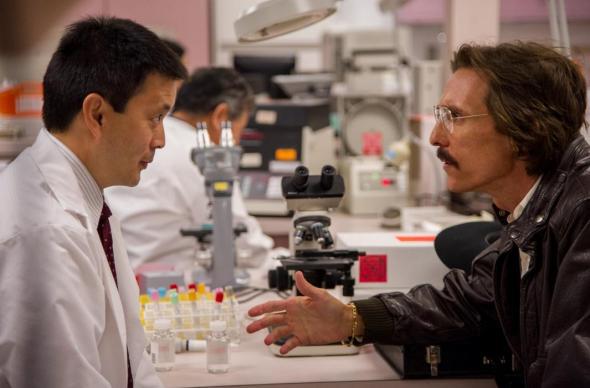The new movie Dallas Buyers Club tells the story of Ron Woodroof,* a heterosexual—and initially very homophobic—Texan who in the late 1980s organized the Lone Star State’s biggest “buyers club,” a DIY distribution service that facilitated access to drugs that were unapproved, unavailable, or prohibitively expensive for people with AIDS. As Slate’s Aisha Harris wrote on Friday, the film is relatively accurate. But how typical was Woodroof’s operation compared with the 40 or so clubs that were operating in other U.S. cities in 1987? Although he had some things in common with organizers of other buyers clubs, he was pretty atypical in many ways.
According the movie, Woodroof was driven by desperation. Excluded from participating in trials of AZT, the first, and at the time the only, drug approved for AIDS patients, he decided to take responsibility for his own treatment. That motivation was shared by many of the organizers of what was often referred to as “the AIDS drug underground.” Frustrated by the FDA’s slow drug-approval process, and alarmed by seeing friends die soon after diagnosis, people with AIDS took their health into their own hands. The 2012 documentary How to Survive a Plague, which includes several scenes filmed at New York’s People With AIDS Health Group—the country’s first buyers group and one of the biggest—quotes a worker there saying, “In the absence of adequate health care, we have learned to become our own clinicians, researchers, lobbyists, drug smugglers, pharmacists. We have our own libraries, drug stores, newspapers, and laboratories.”
Although Dallas Buyers Club does show Woodroof studying medical journals, it unsurprisingly devotes the bulk of its running time to more dramatic exploits such as his international trips in pursuit of foreign pharmaceuticals. In fact, though, in addition to being “guerrilla drugstores,” the clubs served a crucial informational and evaluative purpose. For instance, the PWA Health Group maintained an extensive library of scientific journals, and having tracked research from around the world, its staffers would summarize their findings in fact sheets that patients might use to decide which, if any, of the drugs available through the club were right for them.
Woodroof was far from the only heterosexual involved in the buyers club movement, but gay men did dominate. Partly this was because the gay community, which was so devastated by the disease, already had established publications and meeting places. Treatment options and research breakthroughs were given extensive coverage in the gay press and discussed in gay social groups, and flyers and magazines could be distributed in gay bars.
Woodroof, who operated out of his apartment, was more isolated than most of the clubs. In New York, for instance, the PWA Health Group was based at 31 W. 26th St. in Chelsea, which also housed several other groups serving people with AIDS, including a hotline, a newsletter, a film-making collective, and a group that was conducting clinical trials on AIDS drugs.
As a whole, the buyers club organizers tended to be more middle-class and more educated than Ron Woodroof. In his book Victory Deferred: How AIDS Changed Gay Life in America, John-Manuel Andriote wrote of the people with AIDS who were drawn to the self-empowerment movement: “As middle-class white American men, they felt a strong sense of entitlement to support and health care services that all middle-class people in this country take for granted.”
In a sense, this class divide was the buyers clubs’ Achilles heel. Since their wares weren’t covered by health insurance, they were only accessible to clients who could afford to purchase items with their own funds. Dallas Buyers Club shows Woodroof turning away potential members who don’t have the $400 for his monthly packages, and similar scenarios did play out all over the country. The PWA Health Group’s first executive director, Derek Hodel, told Andriote, “The buyers’ clubs fulfilled a need for people who were relatively plugged in, had access to this kind of information, and had the wherewithal to negotiate that kind of transaction. But it didn’t really take care of a lot of other people who still deserve to be helped.”
*Correction, Nov. 5, 2013: This post originally misspelled Ron Woodroof’s last name.
